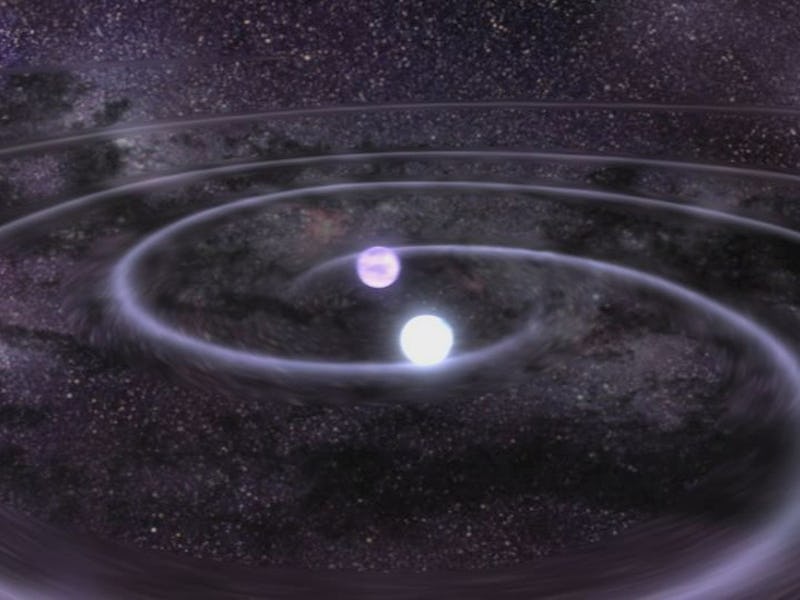American Physicists Win Nobel Prize for Work on Gravitational Waves
"This year’s prize is about a discovery that shook the world."

On Tuesday, the 2017 Nobel Prize in physics was awarded to three American scientists for their foundational work on gravitational waves. Rainer Weiss, Barry C. Barish, and Kip S. Thorne, members of the Advanced Laser Interferometer Gravitational-Wave Observatory (LIGO) and Virgo Observatory collaboration, received the award for their work, which just a week ago led to the discovery of the fourth-ever gravitational wave. The Nobel committee praised the astronomers “for decisive contributions to the LIGO detector and the observation of gravitational waves” in an announcement.
Weiss is a professor emeritus of physics at Massachusetts Institute of Technology. Half of the prize went to him, while the other half was split between Barish, a professor emeritus at Caltech, and Thorne, a professor of theoretical physics at Caltech.
These astronomers, who have been working to detect gravitational waves — evidence of black holes — for decades, received their big break in September 2015.
“When we first discovered them back in September 2015 many of us didn’t believe it,” Weiss said on a call to the Nobel conference.
The team’s announcement came in February 2016, months after the detection. Inverse reported on it when it happened:
Why did it take so long? Gravitational waves are so obscenely small and weak that scientists have been looking for a signal that’s on a scale to power of -23. There’s always been a surfeit of secondary evidence, but real proof is insanely difficult to find at that scale, which is why LIGO was put together 25 years ago. A collaboration between MIT, Caltech, and nearly 1000 scientists across 16 countries, LIGO built something called an interferometer: a four-kilometers long instrument that shoots lasers back and forth with mirrors to detect signals that are as tiny 1/1000 the diameter of a proton.
Two of these laser-based detectors, located in Louisiana and Washington, helped scientists confirm that any ripple in spacetime they detected wasn’t a fluke. It sounded like a little chirp, but that chirp actually indicated the massive energy released by two huge black holes merging into one.
And while the signal was small, the result was groundbreaking. It proved Albert Einstein’s century-old theory that gravitational waves, ripples in spacetime, exist. Here’s a simple explanation from the European Space Agency:
The LIGO chirp has opened up new possibilities for human exploration of the universe. The Nobel Prize officially recognizes
“This year’s prize is about a discovery that shook the world,” Nobel committee representative Göran K. Hansson announced at the conference on Tuesday.